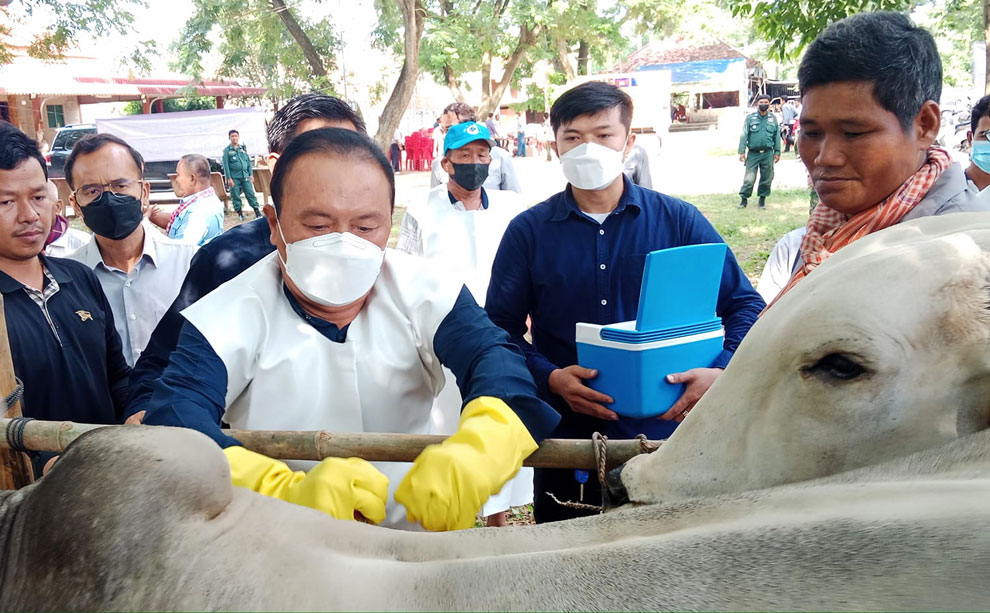
Veterinarians vaccinate a cow against lumpy skin disease in Kampong Cham province’s Kampong Siem district last weekend. FACEBOOK
The General-Directorate of Animal Health and Production delivered 170,000 doses of lumpy skin disease (LSD) vaccines nationwide, calling on farmers and veterinarians to regularly monitor their cattle for the disease because its spread can be difficult to detect.
LSD spread to Cambodia in May, 2021, when more than 60,000 cattle were reported to have been infected with the disease. In the first seven months of this year, more than 1,000 cattle were reported to have been infected – most of them calves – according to Nou Vonika, public health director at the general-directorate’s Department of Animal Health and Veterinary.
Vonika said on July 25 that the general-directorate has provided vaccinations for 170,000 cattle against the disease across the country since the campaign began in late 2021.
“Because the number of cattle in Cambodia is as many as seven million, we offer these vaccinations as a strategy for preventing a [large-scale] outbreak. We've offered this vaccine to other areas with outbreaks of this disease back in 2021, such as the provinces of Kampong Cham, Preah Vihear, Mondulkiri and Kandal.
“Last year, we had many infections due to animals imported from our neighbouring countries where it first broke out and then it spread to us. We wanted to curb it and also treat the sick animals until we brought in enough vaccines. Later, there was a state programme and also work done by civil society organisations to vaccinate cattle, and this year there are less infections than last year,” he said.
Vonika said the vaccine provides protection against LSD for at least one year and the ministry has incorporated it into the national programme run by the government so that Cambodia's cattle can be vaccinated again each year.
According to the ministry, LSD is caused by a virus in the poxviridae capripoxvirus family, which was first detected in Zambia in 1929 and has since spread around the world to the rest of Africa, the Middle East, Europe, Southeast Asia, Central Asia and China. It has had a devastating effect on farming families and the animal husbandry sector to the detriment of many countries' national economies.
The ministry said that five to 45 per cent of infections by the disease cause illness in the animal, and fewer than 10 per cent of infections result in death, but that number is enough to cause serious losses to the national economy and can be catastrophic for individual farmers.
Its symptoms include small or big lumps on the necks, noses, roofs of mouths, genitals and breasts of the animals and their temperatures can go as high as 41 degrees Celsius.
The ministry added that the lumps can become scabs or ulcerous, and in male animals they can cause impotence while pregnant females can suffer miscarriages. The disease is transmitted from one animal to another through direct or indirect contact physical contact rather than being airborne.
Tan Phanara, head of the general-directorate, said at a press conference on July 19 that officials had been quick to act and treat infected cattle and import the necessary vaccines from abroad to curb the spread.
He added that though the outbreak of the disease had subsided somewhat in Cambodia, the general-directorate still called on and advised people and relevant officials across the country – especially the veterinary bureaus throughout the country – to monitor cattle under their care and to immediately report any suspicious symptoms or outbreaks.












